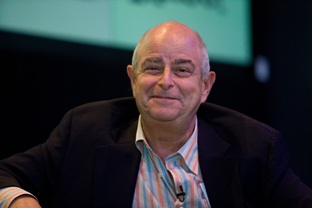Can Agencies Afford to Innovate? - Jerry Shereshewsky - MediaBizBloggers

When my wife and I renovated our house, we discovered the cost of asking electricians to do something (like add more outlets) that was not in the original scope of the work. Had we paid more attention to the plans with the architect, had we the vision to extrapolate the realities of life from a two-dimensional drawing, and generally been semi-clairvoyant, we might have included an allowance for unforeseen developments and changed our minds and ideas. Or, we probably might not have.
We were renovating on a tight budget – exactly the way most media agencies and their clients arrange agency compensation. It starts with a scope of work, some broad agreements, and then negotiations. Through those negotiations things get whittled away and rarely does the end result allow for innovation and creativity. New-media opportunities are usually pushed to the sidelines (nice to do, but we don't have the budget). So agencies tend to use tried-and-true methods over and over again, even when the tried is tired and significantly less true. That's why network television continues to command large budget shares and get rising CPMs despite a shrinking-and-less-attentive audience.
Economics dictates many of our decisions, even if those economics are faulty or especially short-term focused. Big sites get a disproportionate share of attention from agencies because the cost of actually processing a buy – the outreach, negotiations, insertion-order production, post-buy and reconciliation – has an inelastic cost structure that doesn't change with the size of the buy. Therefore, buying one site with 10 million visitors costs the agency significantly less than buying 10 sites with 1 million visitors. The simple arithmetic of cost allocation within a narrow-margin structure defines how innovative, how creative, or how experimental an agency can be.
Back in the fat-and-happy 15-percent commission era, smart account managers took some of their often pudgy profit and reinvested it in their clients' brands by developing and presenting new and innovative ideas. As an account supervisor on General Foods (GF) business at Y&R in the 1970s, it was mandatory that my team – media, creative, research, account service – develop four new business-building ideas that did not directly involve spending more media dollars each quarter. On our nickel, we examined new audiences, new media, promotions, and new products. (A colleague, Jordan Stanley, brought frozen pudding on a stick to GF complete with a sampling program. It created a whole new category.) Our internal "rules" said that recommending an extra spending-test didn't count. Our management demanded that we reinvest a part of our revenue with no self-interest involved except building the client's business.
Perhaps that's why agency-and-client relationships were often so long-lived. They could afford to be. A longer-term view of life could accommodate short-term bumps in business. I proudly presided over the forty-fifth anniversary of the Y&R and BirdsEye relationship. Today, how many agencies have relationships with clients that last even four and a half years? The constant pressure for short-term results at the expense of long-term growth ultimately does little for the real bottom line, and instead, drives the value equation into the toilet.
Jerry Shereshewsky is CEO of grandparents.com; a lifestage website for the baby boomer grandparents of today and tomorrow. Jerry can be reached at jhs@grandparents.com
Read all Jerry’s MediaBizBloggers commentaries at Rants & Raves from the Heart of Advertising - MediaBizBloggers.
Follow our Twitter updates @MediaBizBlogger


